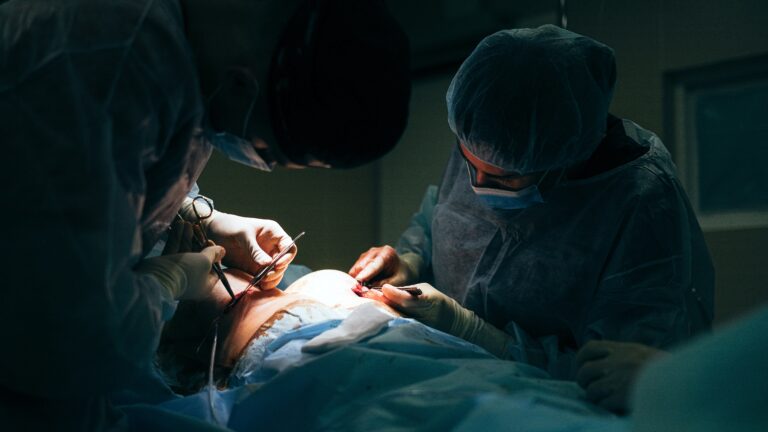Do you want to turn back time or look like a younger version of yourself? A facelift might be your answer! Are you still worried that males do not have facelift procedures? So you will be amazed to know that male facelift treatments have climbed by 20% over the past two decades.
Want to know “how many facelifts can you have”? Read it till the end to learn all about it.6.
What is a surgical facelift?

Rhytidectomy is another name for the classic or surgical facelift. This procedure realigns the soft tissues of the neck, midface, and lower face into a younger-looking shape. Facelifts target several problem areas, such as sagging cheeks and the prominent creases between them and the lips, drooping jowls that blur a clean jawline, and extra skin and fat on the neck.
Cosmetic surgeon will adjust their techniques throughout facelift surgery to best suit the demands of each patient.
- Mini facelift
Patients with minor skin sagging and jowling are suitable candidates for a mini-facelift. This less invasive procedure enables a cosmetic surgeon to tighten deep facial tissues through smaller incisions, usually along the hairline above each ear or in the natural creases surrounding the ear. These incisions elevate and tighten structural tissues around the cheeks to treat jowls and revive a tired appearance.
Your cosmetic surgeon will tell you the best surgical plan for your particular needs. Whether a mini-facelift should be performed under general anesthesia or local anesthetic with sedation. It depends on the circumstances. You can delay the need for more substantial surgery for many years by taking care of negative symptoms of aging before they become too evident with the help of a mini-facelift.
- Standard facelift
Moderate to advanced aging around the neck and mid-face will be more addressed by a traditional or standard facelift. Although the procedure is more involved than those for a mini-facelift and requires a more extended recovery period, the outcomes are more striking. A cosmetic surgeon repositions the deeper tissues beneath the skin. They will then remove extra skin to smooth creases and remove jowls and sagging skin under the chin. Then restore a youthful contour to the face and neck through incisions placed behind the hairline, beginning near the temples, around the front of the ear, and hidden in the natural folds.
Risks to consider before facelift surgery
Facelift surgery may lead to complications. We can control some difficulties with the proper treatment, medicine, or surgery. Although uncommon, long-lasting or permanent problems can alter one’s look. The risks include:
- Skin loss
Rarely, blood flow to facial tissues gets cut off during a facelift. Skin loss may happen from this. To to address skin loss medications and proper wound care are used. If required, a treatment might lessen scarring.
- Nerve injury
Nerve damage is rare. Nerves that regulate sensation or muscles may be damaged. It can take months to recover from a temporary loss of feeling or inability to move facial muscles. Surgery might result in some advancement.
- Hair loss
You can suffer from hair loss near the incision sites, which can be either temporary or permanent. Surgery to transplant skin with hair follicles can treat permanent hair loss.
- Scarring
Facelift incision scars are unavoidable. The hairline, ears, and face’s natural shapes usually conceal them, though. Raised scars from incisions are rare. Corticosteroid injections or other procedures are used to lessen the visibility of scars.
- Hematoma
A hematoma or blood collection under the skin is the most common problem following a facelift. Pressure and swelling are symptoms of hematoma. Surgery should be performed as soon as hematoma develops to protect the skin and surrounding tissues.
There is a risk of infection or bleeding with a facelift, like any other major operation. The risk of an anesthetic reaction is also a possibility. The risk of complications can also rise due to specific medical conditions or lifestyle choices.
How many facelifts can you have?
Due to the enduring effects of gravity, patients who undergo facelift operations continue to age. Due to this, it’s common for people who have facelift surgery to later desire more facial rejuvenation. Although there isn’t a limit on ‘how many facelifts can you have’, most surgeons concur that 3 to 4 is the greatest but since two patients are never the same. The treatment of excess facial skin differs from patient to patient and is influenced by several factors. Depending on the patient’s anatomical findings and particular aesthetic objectives, the choice to undertake many facelift treatments is made.
Surgical rejuvenation should be customized for each patient as a result. Some people need one facelift to meet their cosmetic needs for the rest of their lives, but others can need several surgeries. Extra skin and subcutaneous tissue are removed with each facelift. Patients who receive many facelifts may seem unnatural. Their skin has a stretched-out, wind-blown appearance.
Facelifts are also one of many means of rejuvenating appearance. Some people may find non-surgical procedures such as fillers, laser, or Botox resurfacing help to extend the life of their facelift or help push back the age at which they have their first facelift. Instead of worrying about how many facelifts can you have, concentrate on getting the highest quality tailored to your unique concerns. Remember always to visit a board-certified facial plastic surgeon for your facelift surgery. They should be able to develop a treatment plan with this surgeon that makes them look younger and more natural.
What is a cryo skin facelift?
A handheld wand provides targeted cold to your face, increasing blood flow, oxygen, and nutrient delivery to the cells, promoting collagen and elastin formation, and enhancing skin elasticity to make your face look younger and more refreshed.
Pores contract for a radiant appearance with the cold, and puffiness is diminished. The cold helps reduce inflammation and redness, so it is fantastic for people with sensitive skin or rosacea.
One 20-minute treatment will result in tighter skin, an elevated face appearance, and fewer wrinkles. What’s best? Each session covers the neck, making it the ideal treatment for lifting and firming this overlooked area that starts to sag and exhibit signs of aging.
How many facelifts can you have by Cryo-skin procedures?
Since it is a three-step procedure, as mentioned in Cryo-skin Facelift. The results also depend on the type of procedure you have undergone.
Results from Cryoskin Slimming are long-lasting. The process destroys the fat cells, so once they are gone, they are gone for good. Of course, a healthy diet and exercise routine are still required following the procedure to keep the leftover fat cells from expanding.
As the skin ages, the effects of cryo skin toning and cryo skin facial (and neck lift) are temporary. Thus, one session per week for five weeks (for the same area) is advised to maximize the results, followed by one monthly session for maintenance.
This treatment plan’s cumulative effects will help sustain higher collagen and elastin production levels, improving elasticity, smoothness, shine, and youthfulness.









